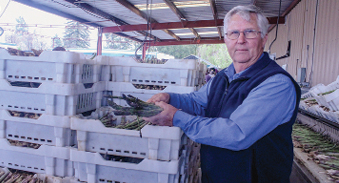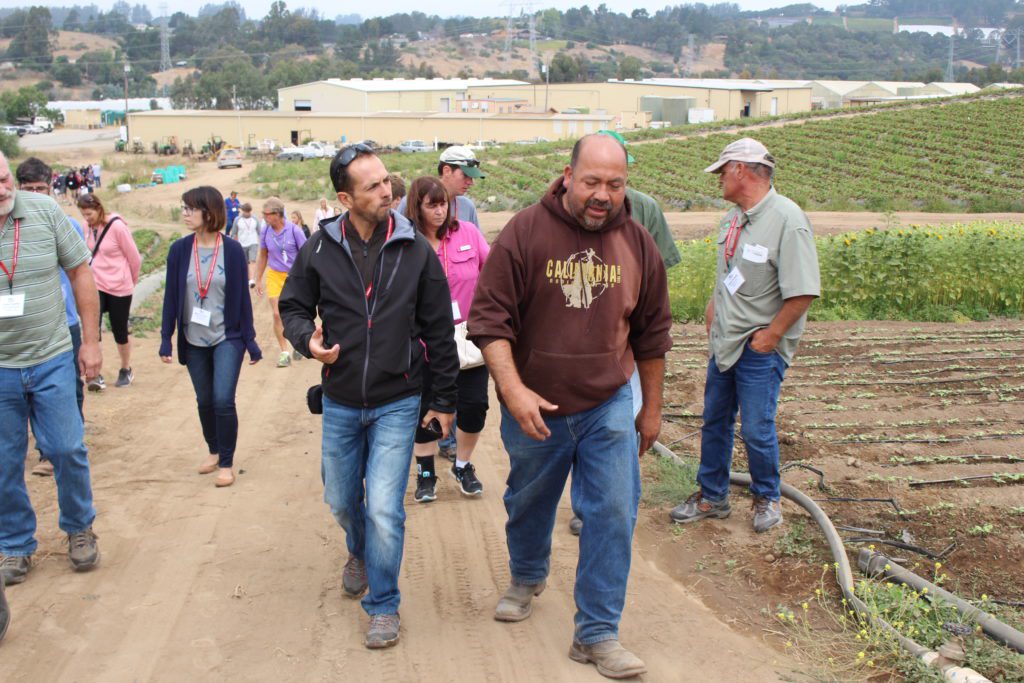Feb 17, 2022‘There’s no doubt in my mind that (organic) will keep growing’
With sales of organic fresh produce continuing to grow, farmers say they remain optimistic about their market prospects, even as they face a potentially challenging season complicated by drought, shifting demand and higher costs.
The return of food service after pandemic-related lockdowns shuttered restaurants has not severely eroded growth of produce sales at retail outlets, where organic food purchases largely occur, according to food industry observers. Total U.S. organic produce sales topped $9 billion in 2021, an increase of $477 million compared to 2020, the marketing organization Organic Produce Network reported last month.
“There’s no doubt in my mind that it will keep growing,” said Monterey County grower Javier Zamora.


As people become more mindful about their health and the foods they eat, Zamora said he expects demand for organic produce will continue to rise. Growth in demand has already spurred conversion of more conventional acreage to organic production, he added.
Despite stronger demand from food service in 2021, Dick Peixoto said his farm, Lakeside Organic Gardens in Santa Cruz County, did well last year selling produce to retail stores and companies that sell directly to homes. Peixoto said those markets remain “pretty good,” indicating that people who moved to eating more organic foods during the pandemic are sticking with it, which helps demand.
“A lot of them look to organic, as it is just one step in the right direction to eat more healthy,” Peixoto said.
He said he also thinks the organic trend has holding power as a new generation of shoppers raised on organic produce has an enduring allegiance to buying organic.
Because organic products are typically higher priced, San Diego County grower Noel Stehly said he thinks the sector will take a hit as shoppers pull back spending on organic items in reaction to overall inflation of food prices. He said he’s already seeing signs of this in his wholesale produce business and at his grocery store, Stehly Farms Market in San Diego.
“If people think it’s more expensive, they’re not going to pay for it,” he said. “People think they can get it cheaper if it’s conventional.”
As the state enters what could be another dry year, Paul Muller, a partner of Full Belly Farm in Yolo County, said water availability—more than market trends—will determine what crops and how many acres he can grow. It will also impact pricing.
For now, he’s planting everything from potatoes to leafy greens—crops that are “more water thrifty” during cooler temperatures. But the real test will be in the July-September summer months, when “we might see this whole system get a little bit stressed,” he said.
If the farm needs to reduce acreage, Muller said, it may mean dropping some of its wholesale business so it can maintain farmers market sales and subscription produce boxes—two areas “where we can create a dialogue about fair prices.”
To save water, Zamora said he will not be planting crops such as kale, chard, spinach and cabbage that require overhead watering. Instead, he will grow more leeks, scallions, onions, tomatoes and squash that can be irrigated with drip tape.
With restaurants coming back, Zamora said he may also look to grow more “boutique stuff” favored by chefs versus produce staples that are grown on a larger scale.
Muller said one area of concern for organic California growers is the influx of fresh-market tomatoes from Mexico grown in containers or hydroponic systems that directly impact the U.S. market.
Jim Durst, who grows organic vegetables in Yolo County, shares Muller’s concern. Despite “pretty strong” sales during the past two years, he said increased competition from Mexico has driven down prices for U.S. organic farmers. Because of demand for organic produce, he said, every retailer wants part of that market, and for many of them, “it really doesn’t matter where they get it, just as long as they have it.”
“If they’re buying organic cilantro from Mexico at 30% of what California growers are selling it for, then they’re going to buy it from Mexico because cheap sells,” he said.
Though the drought remains a concern for all California farmers, Durst said his cropping decisions are now influenced more by what he thinks he can harvest, not by what he can sell. Everything he grows must be handpicked, and during the past two years, he said he had to leave 30% of his crops in the field due to labor shortages. This year, he’s reducing his acreage by 30%.
With restaurants coming back, Sacramento County farmer Curtis Lucero, who specializes in fresh-market organic tomatoes and is known for his heirloom varieties, said he’s planting more of them this year while reducing acres of eggplant and peppers, which haven’t done as well.
He described 2021 as “our best year in a while,” having sold nearly everything he grew – and he’s expecting the same this year. Even so, he said his profit margin “went way down” because of higher production costs. He hasn’t raised prices in the past two years but will need to this year, he said.
After cutting short his 2021 season due to lack of surface water, Tulare County farmer James Birch said he plans to grow all his acreage this year because he now has a well. With his crops on drip tape, he said he’s also added more high-tunnel houses, which allow him to use “a lot less water” and extend his season.
Birch’s farmers market business consists largely of pre-sold orders from chefs and produce companies, with 20% in walk-up business. He said higher prices so far haven’t hurt demand because most of the chefs he sells to operate high-end restaurants that can absorb the higher cost by raising menu prices. Though his sales to restaurants evaporated in 2020, they’re now “back to normal, maybe even higher,” he noted.
“There’s huge demand for organic produce right now,” Birch said. “The restaurants that I sell to, they’re looking for organic produce. I think it’s the way of the future. I think the organic food market just keeps growing.”
– Ching Lee, California Farm Bureau Federation
Photo at top: Monterey County grower Javier Zamora, right, during a tour of his farm. Photo: Gary Pullano















